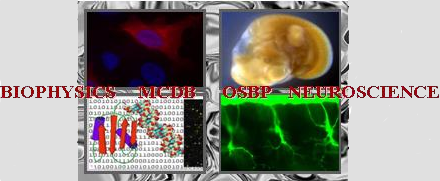Poster abstracts
Poster number 97 submitted by Stephanie Hicks
The Apical Loop of the F2 Peptide in the Respiratory Syncytial Virus Fusion Protein Plays an Essential Role in Membrane Fusion
Stephanie N. Hicks (OSBP), Supranee Chaiwatpongsakorn (Vaccines and Immunity, NCH), Heather M. Costello (Vaccines and Immunity, NCH)
Abstract:
The RSV fusion (F) protein is produced in a metastable, prefusion conformation that refolds to the stable, postfusion conformation when triggered by an unidentified stimulus. This conformational change serves to mediate fusion between an F protein expressing membrane and an adjacent membrane. The prefusion F protein structure has been solved in complex with monoclonal antibody (mAb) D25 that specifically recognizes the prefusion form. The ability of D25 to stabilize the prefusion form and its high neutralizing activity suggests its apical epitope is important for protein function. We hypothesize that residues in this binding site, particularly those in the apical F2 loop, are required for F protein triggering and, therefore, its fusion function. Twelve residues in the apical loop of the F2 domain were mutated to assess their importance in fusion. The ability of these mutants to cause fusion was determined with a cell-cell fusion assay. Six of the alanine-scanning mutants were deficient in their ability to cause fusion, five of which were loss of charge mutants. Mutations conserving or altering each residues charge demonstrated the importance of the natural charge of each residue, and of the F2 apical loop, in general, for F protein function. Each mutant’s cell surface conformation was determined by their reactivity with mAbs specific to the prefusion or postfusion form. All six mutants remained in the pretriggered form but were capable of causing fusion under low molarity conditions. This result suggests that these mutants are not trapped in the prefusion conformation and may, instead, comprise the natural attachment or triggering site on the RSV F protein.
Keywords: RSV, Fusion Protein
